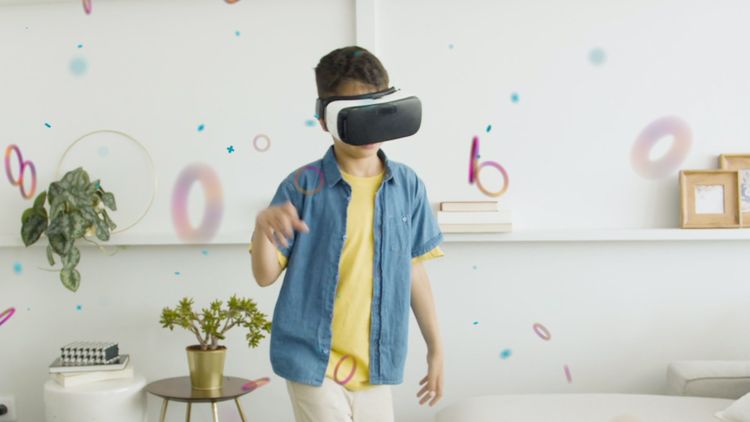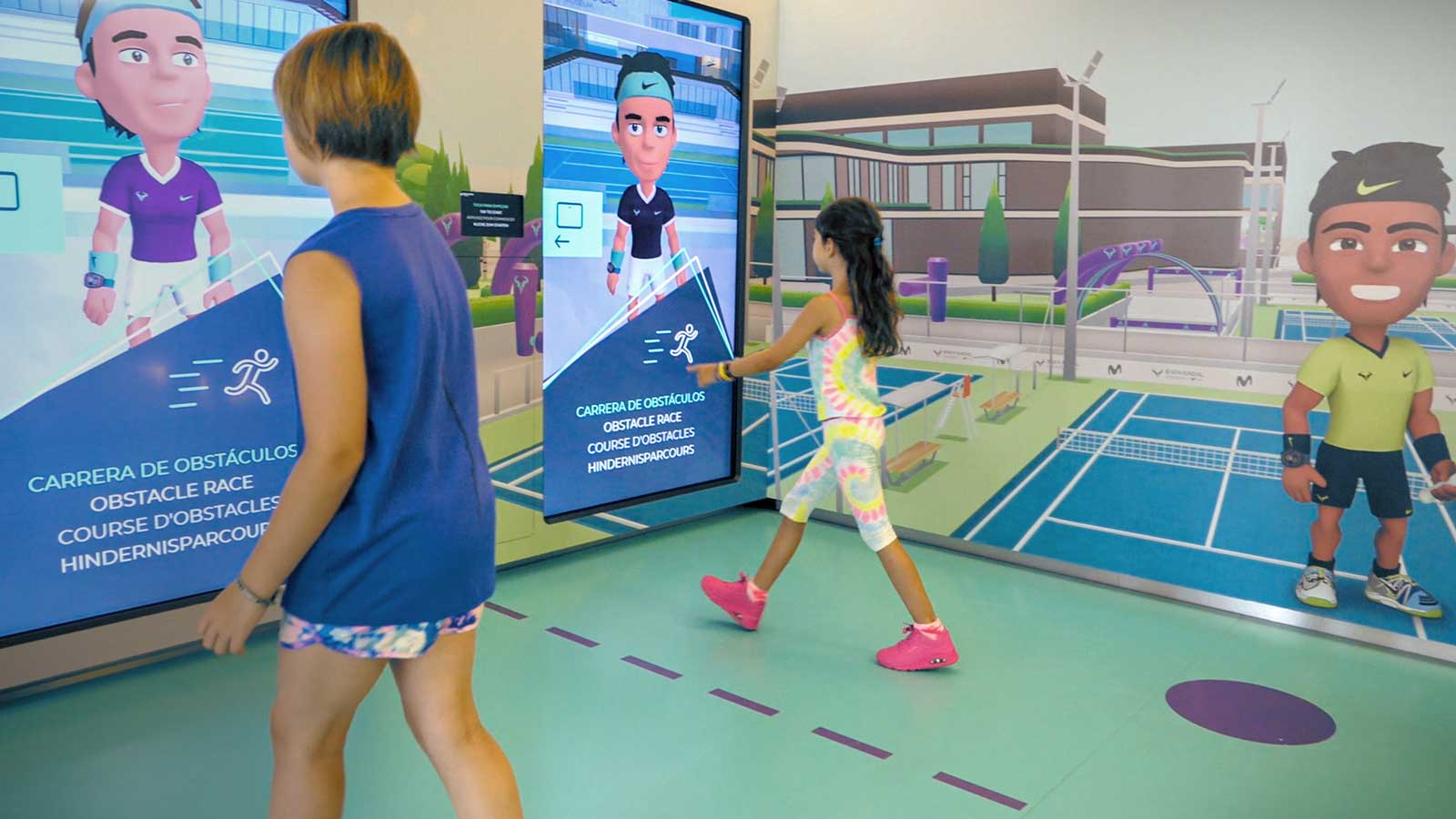Features and benefits of Augmented Reality in education
Features and benefits of Augmented Reality in education
The possibility of approaching the real world from new perspectives, of combining the physical and virtual worlds, of creating an environment full of information that adds value to educational activities. This is what the incorporation of Augmented Reality experiences in education.
Instead of viewing simple images on the projectors, you can show three-dimensional models of outer space, geometric figures, parts of the body, historical moments or even the seabed, as if they were in the same classroom through Augmented Reality devices.
Enhancing creativity, motivation and curiosity of children and not-so-children. Encouraging these digital natives to continuous discovery and to wonder what lies behind. Demonstrating that play and technology are great tools for learning.
In this article we will know in detail the benefits, characteristics and the most important examples of Augmented Reality in education.
Importance of Augmented Reality in the educational context
Before delving into the digital transformation that the introduction of the Augmented Reality in educationIn order to understand what this technology is all about, it is essential to know what it is all about. Augmented Reality is one of the three technologies that form part of the Extended RealityThis idea of uniting the physical world with the virtual world.
The Augmented Reality combines the real world with the digital world by superimposing virtual elements on the reality itself. Thanks to this immersive technology, the real and virtual environments intermingle, creating interactive experiences accessible from various devices at the same time: from cell phones and tablets to Augmented Reality glasses. While AR experiences superimpose digital elements showing the real world at the same time, Virtual Reality, on the other hand, immerses users in totally artificial immersive and interactive environments.
You can learn more about this other revolutionary technology in our publication: Virtual Reality in education: features and benefits.
In the field of education, Augmented Reality makes the learning process a highly dynamic and interactive experience. By overlaying digital information on the real world, AR transforms classrooms into spaces where theoretical concepts become visual and tactile experiences.
In addition, AR technology offers personalization of learningThe content is adapted to the needs and rhythms of each student, resulting in a more inclusive and effective educational environment.
Key features of Augmented Reality in learning
We are currently witnessing how technological advances have been transforming curriculums and teaching methodologies to all ages. From toddlers to job trainings, the different modules, courses and learning models have been changing with the introduction of the Virtual Realityof Artificial Intelligence or the Spatial Computing.
The Augmented Reality in training is distinguished by a series of fundamental characteristics that make it the basis for creating richer, gamified and immersive educational experiences.
Immersive experiences
Augmented Reality and other immersive technologies allow the strategy to be followed learning by doingthat is, to work on the tacit knowledge and interactive learning with students.
Everything to go beyond textbooks, pictures and videos, to go beyond textbooks, pictures and videos to complement them with immersive experiences where the student is part of the action.and proactively advances in their learning.
A more practical experience that allows, from the classroom itself, to travel to the past, to space, to understand the most abstract concepts of mathematics and physics... everything through three-dimensional models superimposed on reality. Or even through educational experiences in Virtual Reality such as in the case of KAI XR, a VR platform where students can learn about history, the animal world and even NASA through Virtual Reality goggles.
Real-time interaction is one of the most valuable features of Augmented Reality in education, as it transforms the way students relate to learning material. This functionality allows learners to interact with virtual objects and environments overlaid on the real world, offering a instant response to your actions.
Coupled with Artificial Intelligence, this real-time interaction can even be carried over to languages, with the simultaneous translation of conversations. Or to physics tests, where the superimposed 3D model changes in real time at the same time that we change the parameters. All with the idea of creating spaces for trial and error, to generate simulations and to make learning more dynamic and experimental.
Take a look at our Artificial Intelligence services for companies.
Personalization of learning
New technologies such as Augmented Reality allow us to adapting the educational experience to the particular needs of each student. Personalizing the subjects and the pace of learning. Converting abstract concepts into interactive visual representations, facilitating student understanding.
In addition, Augmented Reality allows learners to explore different topics and information at their own pace, fostering a autonomous and personal learning. This personalization not only enhances motivation and engagement It also ensures that each student is able to reach his or her full potential.
You may be interested in → Augmented Reality and Artificial Intelligence Interactions.
Benefits of Augmented Reality in education
Augmented Reality is redefining the frontiers of learning in education, offering multiple benefits that transform both teaching and learning. student experience.
By overlaying digital elements on top of the real world, this immersive technology facilitates more interactive and immersive educational experiences than the real world. attract the attention and stimulate the curiosity of the students.
The following is a more detailed analysis of the three main benefits of Augmented Reality in education:
Academic motivation
Immersive technologies such as Augmented Reality enrich the educational experience by adding another layer of interaction and gamification to learning. By integrating visual and tactile elements into the classroom, Augmented Reality not only engages students' interest, but also invites them to explore and learn. Turning lessons into educational adventuresThe program is based on an active and participatory approach, traveling back in time to historical moments or transforming the classroom into the seabed.
Improved accessibility
Augmented Reality offers significant improvements in accessibility within education, especially beneficial for students with disabilities or special learning needs.
By providing alternative and interactive methods for visualizing and manipulating informationWith this technology, this technology can be adapted to a variety of learning styles and physical abilities, allowing all students to participate more fully in the educational process.
An example of this improvement in accessibility can be found in the project LOARRE XR, an Extended Reality platform in which the virtualized the visit to the Loarre Castle, a Romanesque castle of difficult access and with more than ten centuries of history.
3. Facilitates the understanding of abstract concepts
Undoubtedly, one of the most important benefits of the implementation of Augmented Reality in the educational system is its ability to improve understanding of the students. Allowing visualization of abstract or complex concepts in three dimensions, making it easier for students to understand and retain the information.
All through memorable and interactive AR experienceswhere you can see a visual representation of parables, the human body, a historical event or mathematical concepts.
Augmented Reality projects in education by Imascono
Undoubtedly, technology plays a key role in the present and future of education. Throughout the article we have seen some examples, but here we want to show you three of the most relevant projects of Augmented Reality in educational experiences:
- An unprecedented success story of the introduction of Augmented Reality in the classroom can be found at Chromvillea creative learning app based on coloring sheets whose characters come to life through screens and educational games.
- Augmented Reality allows changing the interaction that children currently have with technology. Instead of being mere passive spectators, AR educational experiences make them the real protagonists of the action. As in the Lacasitos App projectwhere children create their own world of fun together with the different characters.
- Augmented Reality helps us to go beyond the history books, to see with our own eyes the past and even the future. As in the Ibercaja Xplora AR experience. A interactive webApp which allows visitors to travel to three different eras to learn about the past and future of the city of Zaragoza.
Without a doubt, if there is one thing these projects have in common, it is that the technology, fun and immersive learning play a very important role in education. At Imascono We are aware of this and therefore we accompany our clients throughout the entire process of creating this type of educational experience.
From conceptualization to implementation, through our Augmented Reality services for companiesour team of engineers and designers work to adapt Augmented Reality technology to the needs of our customers. specific needs of each educational program and learning method.
Do you need to develop a Augmented Reality focused on education? ¡Get in touch with us!




